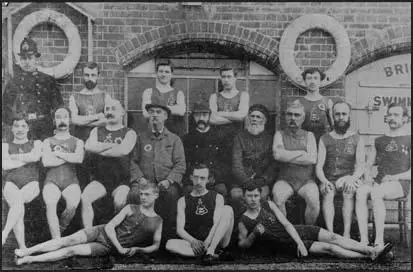Photography
on Location
Dry plate photography
encouraged the professional photographer to leave his studio and
journey to the homes of his customers. No longer weighed down
by heavy wooden chests filled with bottled chemicals nor encumbered
by a darkroom tent, professional photographers were ready to travel
longer distances in order to secure commissions. Early in 1881,
Messrs Lombardi & Co a firm of photographers with a
town studio at 113 Kings Road, Brighton placed advertisements
in the local press "to inform the Gentry and Clergy of
Sussex that they are now prepared to Visit the different Estates
in this and other Counties to Photograph Buildings, Horses, Groups
etc. etc . . Schools attended either in town or country."
As early as 1867, Messrs W. & A.H. Fry artists &
photographers of 68 East Street, Brighton had specialised in taking
photographs of groups out-of-doors. An advertisement in the Brighton
Guardian of 14th August 1867 announced they had "Special
Apparatus for taking Out Door Pictures of School Groups, Cricket
Elevens, Croquet Parties, Archery Meetings, Rifle Corps and Country
Seats." Having already established a reputation for outdoor
group photography, Walter Fry and his younger brother,
Allen Hastings Fry, were keen to take advantage of the
mobility afforded by dry plate photography. In an article
published in 'The Professional Photographer' in June 1916,
Allen Hastings Fry looked back over his long photographic
career. The magazine observed that Mr Fry appeared to be "a
portait photographer glad to get away from the confinement of
his studio." In the interview, A.H.Fry revealed that
he had "photographed two hundred Public School Cadet and
Officers' Training Corps", adding the observation that
he had "travelled over 9,000 miles during the year I was
taking the photographs."

Group
photograph of members of the Brighton Swimming Club taken in front
of their clubhouse on Brighton Seafront in 1881. Instantaneous
photography meant that large groups could be photographed successfully
on location.